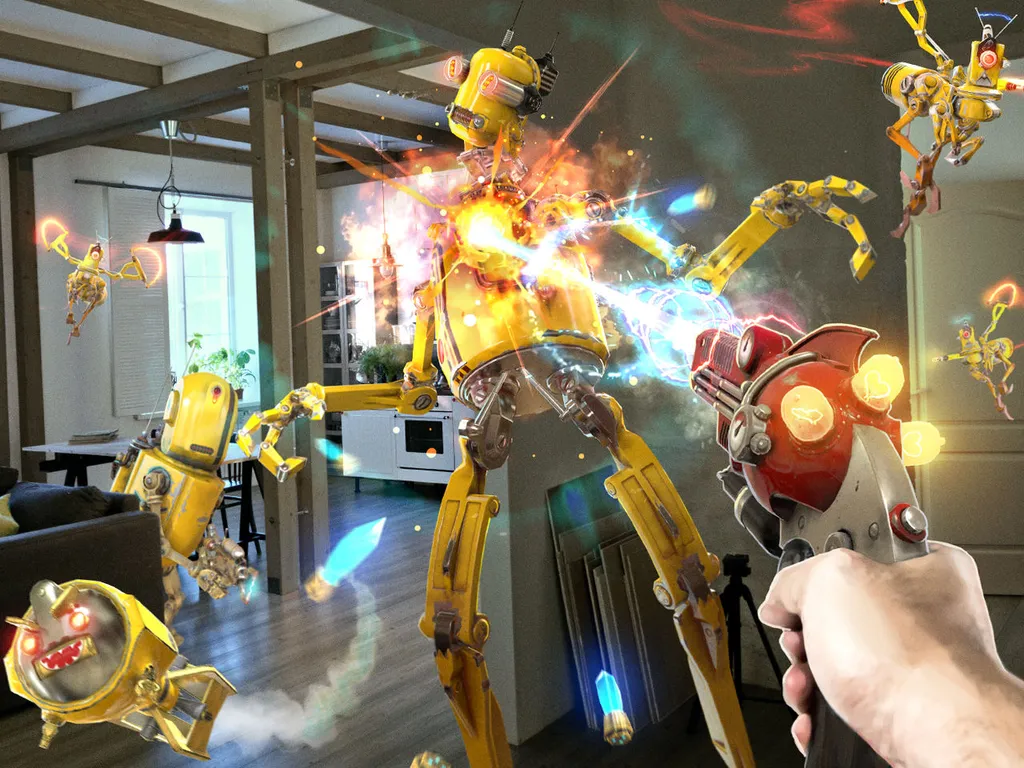I stood in awe five meters across the room from a portal which had opened up from the floor to the top of the wall. Robots were pouring out into the room — Dr. Grordbort’s Invaders — and I was firing shot after shot with my ray gun trying to stop them.
I believed the room really did have this giant opening in it, and as long as I stayed where I was five meters away the illusion was practically complete.

But I didn’t want to stay far away. I wanted to see up close through this doorway into another realm beyond. To approach the portal, however, is to strip away the magic of Magic Leap One with each step forward. My own curiosity was placed in direct opposition to the basic capabilities of the headset.
I’ve come to know a similar feeling incredibly well drawing guardian and chaperone boundaries in my room over the last two years. Unlike the Magic Leap situation, however, too much curiosity in a properly set up Rift or Vive merely gives you a visual reminder that you’ve gone too far out of your play area and need to return. I will take that nudge, however, over the feeling of frustration I felt at seeing the digital world of Dr. Grordbort’s Invaders stripped away with each passing step. Of course, I also moved more quickly and confidently throughout the room in AR than I generally do in a wired VR headset. Still, I would call the larger annoyance the overall frustration of seeing a virtual world you are interested in stripped away as you want to investigate further. Others might never be bothered by this problem but for me it is a constant reminder.
At its best, Magic Leap One impressively augments the world around you and gives you digital characters that are responsive and interesting enough to draw your attention. Dr. G does this incredibly well — a true showcase to developers about how to take advantage of Magic Leap’s hardware. But at the same time the experience is also a showcase to me about how often the AR illusion might be broken by standard behavior. I’d hoped that the limited field of view of Magic Leap One could be ignored with compelling content, but I found that compelling content just drew me to behave in such a way that I noticed the limitations more. I wanted to get closer to that portal so I could see further into the digital world and get a better angle on the robots. Leaning in, however, shrinks the view into the world like a closing shutter. Perhaps over a lot of time this feeling goes away, and I can get comfortable interacting with digital content in Magic Leap in a way that doesn’t bother me — but for me this problem was a distracting frustration throughout my demo time with Dr. G. Others might rarely notice it.
The full Dr. G experience launched for free on Magic Leap and it offers around three to five hours of gameplay.
























